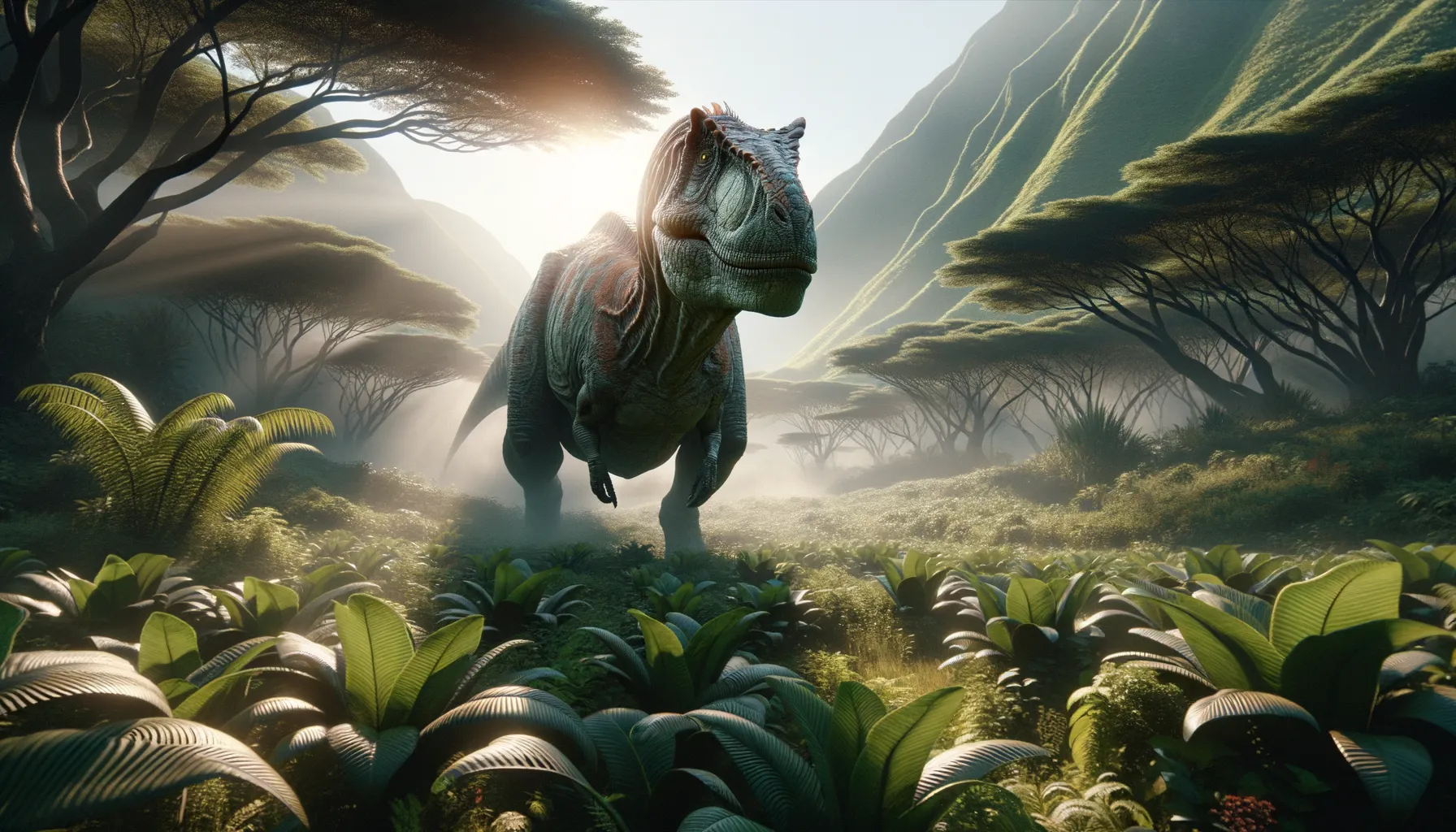
Gigantoscelus
A giant of the Jurassic greenery.
Period
Jurassic
Length
Possessed a length of about 6 meters.
Height
Stood approximately 2.5 meters tall.
Weight
Estimated to weigh around 500 kilograms.
Gigantoscelus was a herbivorous dinosaur that roamed the landscapes of ancient South Africa during the Jurassic period. With a considerable size and robust build, it fed primarily on the lush vegetation that covered its habitat at the time. Paleontologists glean insights into its existence from various fossil findings, offering glimpses into its lifestyle and adaptations. Known for its strong legs, Gigantoscelus would have been well-equipped for the terrains it inhabited.
Diet
As an herbivore, Gigantoscelus primarily fed on ferns, cycads, and other Jurassic flora. Its diet was rich in plant material, which required a specialized digestive system to break down cellulose effectively.
Hunting
Gigantoscelus was not a hunter, but rather a forager, browsing for vegetative matter. It would have used its height to reach taller plants others could not access.
Environmental challenges
During its time, Gigantoscelus faced changing climates, which influenced the availability of plant life in its environment. Predators such as theropod dinosaurs posed a threat to its survival, necessitating a reliance on group living for safety. The evolving landscape also required adaptability in finding food sources as plant communities changed over millennia.
Speed
Moderate mobility, not particularly fast.
Lifespan
Could live for roughly 25 to 30 years.
First discovery
First discovered in South Africa in the early 1900s.
Fun Facts
- Gigantoscelus means 'giant leg', highlighting its large limb bones.
- This dinosaur lived during the late Triassic period, around 210 million years ago.
- Gigantoscelus was likely a herbivore, munching on plants prevalent during its time.
- Fossils of Gigantoscelus have been primarily found in what is now South Africa.
- It is believed that Gigantoscelus walked on all fours, given its sturdy limb bones.
- Despite its name, Gigantoscelus was smaller than many famous dinosaurs, but impressive for its era.
- Being a little-known dinosaur, Gigantoscelus provides insight into early dinosaur evolution.
Growth and Development
Young Gigantoscelus would have experienced rapid growth to reach maturity quickly, a common strategy to avoid predation. This development period involved both physical and social changes as they learned to navigate their complex environment. Growth rates were likely influenced by the availability of nutrients in their plant-based diet.
Habitat
Gigantoscelus inhabited regions with a mix of open areas and forested patches, providing ample food resources. The diversity in its habitat allowed for opportunities to find shelter and evade predators. Seasonal variations may have influenced its migratory patterns within these regions.
Interaction with other species
Absent from predatory behaviors, Gigantoscelus coexisted with other herbivores, competing primarily for food resources. Symbiotic relationships might have involved smaller animals helping to control parasites in mutualistic interactions. Its presence influenced the vegetation patterns due to its grazing habits.
Natural lifespan
In natural conditions, Gigantoscelus could reach a lifespan of up to 30 years.
Reproduction
Reproduction involved laying eggs in nests constructed on the ground. Parental care might have included guarding the nest from predators until the young hatched. Given its size, Gigantoscelus likely produced a smaller number of well-developed offspring to ensure higher chances of survival.
Social behaviour
Gigantoscelus possibly lived in herds, offering protection in numbers against predators. Social structures within these groups could have involved complex communication for locating food or warning of danger. Young dinosaurs learned essential survival skills through observing and mimicking adult behaviors.
Fossil locations
Fossil evidence of Gigantoscelus has been primarily discovered in South Africa, shedding light on its distribution during the Jurassic. These fossils have been found in sedimentary rock formations, often in layers indicative of ancient floodplains or riverbeds. Continued excavations in these areas may provide further insights into its lifestyle and interactions.
